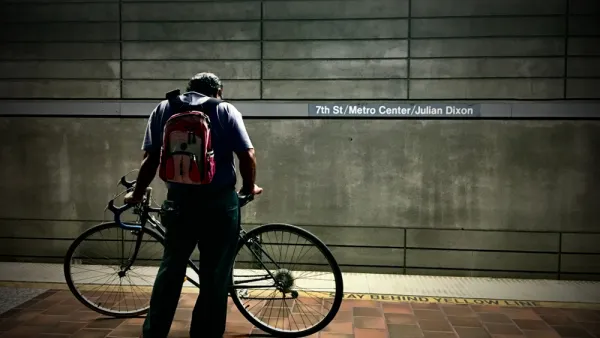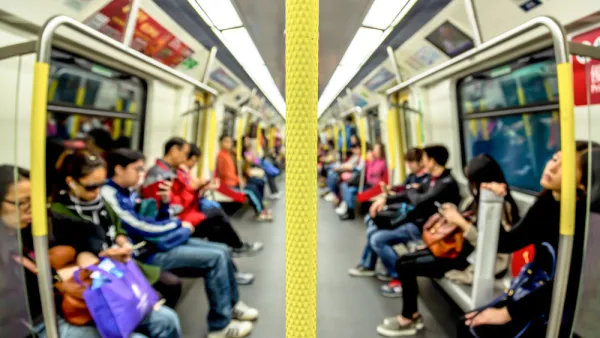This short new publication by the Institute of Transportation Engineers provides an overview of key transportation equity concepts and describes practical ways to incorporate equity analysis into planning.

Social equity (also called fairness and justice) refers to the distribution of benefits and costs in society and the degree to which it is considered appropriate. Transportation planning decisions have significant equity impacts. They affect the allocation of valuable public resources and impact people’s quality of life and economic opportunities.
This is a timely issue. With most communities wanting to become more equitable, practitioners have a responsibility to consider equity in their analysis. In the past, transportation system performance was evaluated based primarily on travel speeds, which favored faster but more costly modes such as driving over slower but more affordable modes with lower external costs such as walking, bicycling, and public transit. Equity received little consideration. In recent years, major transportation organizations including the Institute of Transportation Engineers and the Transportation Research Board have made commitments to social equity and justice.
However, equity analysis can be challenging. A particular policy or planning decision may seem equitable if evaluated using one set of definitions and metrics, but not if evaluated using others.
This new three-page "quickbite" publication authored by Todd Litman provides an overview of key transportation equity concepts and describes practical ways to incorporate equity analysis into planning. It summarizes a more comprehensive report on the subject.
Comprehensive equity analysis is multifaceted; it considers various equity types, impacts, metrics, and groups. Horizontal equity assumes that people with similar needs and abilities should be treated similarly. Vertical equity assumes that disadvantaged people should receive favorable treatment. Comprehensive transportation equity analysis considers the following five categories:
- A fair share of resources (also called fairness or equality). It implies that people should “get what they pay for and pay for what they get,” unless subsidies are specifically justified.
- External costs. Costs that travel activities impose on other people, such as delays, risk, and pollution, are unfair. Fairness requires minimizing or compensating for such impacts.
- Inclusivity - vertical equity with regard to need and ability. This considers how transportation systems serve people with disabilities, youths and seniors, and other special mobility needs. This justifies multimodal planning and universal design requirements.
- Affordability - vertical equity with regard to income. This considers how transportation systems affect lower-income people. Policies that favor lower-income people are called progressive and those that favor higher-income people are called regressive. This justifies policies that improve affordable modes and subsidize low-income travelers.
- Social justice. This considers how transportation systems serve disadvantaged and underserved groups, and address structural injustices such as racism and sexism.
This is an opportunity for planners. More comprehensive equity analysis allows transportation policy and planning decisions to better respond to community needs and values.
FULL STORY: Evaluating Transportation Equity: ITE Quickbite

Analysis: Cybertruck Fatality Rate Far Exceeds That of Ford Pinto
The Tesla Cybertruck was recalled seven times last year.

National Parks Layoffs Will Cause Communities to Lose Billions
Thousands of essential park workers were laid off this week, just before the busy spring break season.

Retro-silient?: America’s First “Eco-burb,” The Woodlands Turns 50
A master-planned community north of Houston offers lessons on green infrastructure and resilient design, but falls short of its founder’s lofty affordability and walkability goals.

Test News Post 1
This is a summary

Analysis: Cybertruck Fatality Rate Far Exceeds That of Ford Pinto
The Tesla Cybertruck was recalled seven times last year.

Test News Headline 46
Test for the image on the front page.
Urban Design for Planners 1: Software Tools
This six-course series explores essential urban design concepts using open source software and equips planners with the tools they need to participate fully in the urban design process.
Planning for Universal Design
Learn the tools for implementing Universal Design in planning regulations.
EMC Planning Group, Inc.
Planetizen
Planetizen
Mpact (formerly Rail~Volution)
Great Falls Development Authority, Inc.
HUDs Office of Policy Development and Research
NYU Wagner Graduate School of Public Service




























